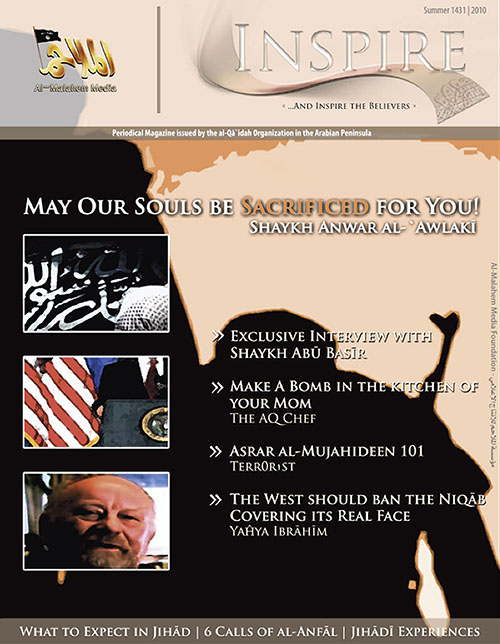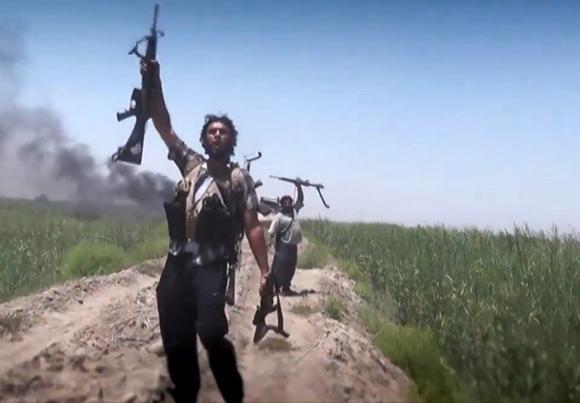The Islamic State has come into possession of chemical weapons. The alarm was raised by the Director of the Department for Non-Proliferation and Arms Control Mikhail Ulyanov of the Russian Foreign Ministry.
"We have already ascertained the use of chemical weapons, the production of which requires the use of rather complex technologies, in Syria and Iraq. Despite this, the United Nations Security Council has not yet condemned these facts first of all to because of the position of our western partners ".
"The joint mandate of the United Nations and the Organization for the Prohibition of Chemical Weapons (OPCW) on the study of suspected cases of chemical weapons in Syria could be extended to Iraqi territory, he said. There was no decision to do so, but we have already prepared the project on the UN Security Council table several weeks ago. " According to Ulyanov the process of chemical demilitarization of Syria is almost completed.
The danger of "micro-tactical" weapons
In the 1986 the relationship edited byInternational Task Force on the Prevention of Terrorism he feared the risk of "nuclear terrorism" and called for more controls and appropriate protection systems to prevent the detonation of a bomb. In November of the 2006, we know that al-Qaeda was looking for nuclear weapons that it would detonate in major UK cities. What is most frightening are the micro-atomic warheads, tactical weapons with relatively low power, but ideal for nuclear terrorism. The nightmare of a nuclear terrorist attack is in any case diversified because the radioactive substance could be combined with the explosive and here we are talking about dirty bomb. In this case it is the detonation that disperses the radioactive material: we are talking about a bomb that is clearly inferior in terms of power and a nuclear explosion, but with a relapse of the agents involved that can reach twelve kilometers in height. If one dirty bomb should it explode in a European capital, for example, the damage would be devastating because the fallout of the material (thanks also to the winds) would extend beyond the effects of the explosion, especially if high-efficiency superficial detonations occurred.
What most worries the intelligence of the whole planet, are the Soviet nuclear sites, the centers of study of the countries in revolt (like those 40 kg of uranium stolen from the deposits of the university of Mosul last summer), the biological agents produced in the Saddam Hussein's laboratories, the simple but deadly radiological waste for sanitary use and toxic waste. A dirty bomb with a few pounds of uranium-235 would be able to propagate a fallout devastating, contaminating vast areas of a metropolis.
The problem of a possible use of dirty improvised explosive devices (IED) is real, because the Islamic State has funds and sympathizers. Just as real could be the use of cells infected with high propagation viral diseases, an evolution of the kamikaze. Today, therefore, the threat is much more stratified than one might imagine, but returning to nuclear power one wonders what could trigger a terrorist attack. We do not fight with sticks because both NATO and the USSR would have canceled each other even after having suffered a first strike. And that precarious world order, given precisely by the constant deterrent patrol, will resist until someone presses that button that would lead the war to another level, probably the last one. But although devastating, the most lethal current threat is not nuclear, but the "neighbor". Not having a real army to fight in the open, the terrorists aim to create small untraceable units, completely unsuspected cells that make their anonymity the best weapon. The standard training of those who vote for the cause of terrorists is the same as ever: kalashnikovs, small arms, bombs, grenades and IEDs.
 To date the "Lone Wolf" represent the most dangerous weapons on the planet for their difficult identification and the ability to hit highly sensitive or poorly protected targets, but of enormous emotional impact. For example, anyone could build a "pressure cooker bomb". Simply a pressure cooker filled with explosives. It is considered the easiest IED to make because, in addition to the explosive itself, it can be made with readily available materials, some of which are available in every home. The detonation can be activated by a simple electronic device such as a digital clock, an alarm clock or a mobile phone. The power of the device depends on the amount of explosive that can be stored inside. The pressure cooker, due to its particular shape and closure, in fact under pressure, initially contains the expansion of energy, multiplying it exponentially. Finally, considering the incredible possibility of placing any household object inside, such as nails or bolts, we understand the fragmentation capacity of the potentially lethal pressure cooker at a very short distance.
To date the "Lone Wolf" represent the most dangerous weapons on the planet for their difficult identification and the ability to hit highly sensitive or poorly protected targets, but of enormous emotional impact. For example, anyone could build a "pressure cooker bomb". Simply a pressure cooker filled with explosives. It is considered the easiest IED to make because, in addition to the explosive itself, it can be made with readily available materials, some of which are available in every home. The detonation can be activated by a simple electronic device such as a digital clock, an alarm clock or a mobile phone. The power of the device depends on the amount of explosive that can be stored inside. The pressure cooker, due to its particular shape and closure, in fact under pressure, initially contains the expansion of energy, multiplying it exponentially. Finally, considering the incredible possibility of placing any household object inside, such as nails or bolts, we understand the fragmentation capacity of the potentially lethal pressure cooker at a very short distance.
Even the last-minute terrorist, reading Inspire (al-Qaeda magazine) and following step by step instructions in the article "Make a Bomb in the Kitchen of Your Mom", published in the summer of 2010, could make a bomb. The article, signed by "AQ Chef", should be the work of the terrorists Anwar al-Awlaki, US engineer and Samir Khan, editor of the magazine. "The pressure cooker is the most effective method of making a simple bomb. Fill it with chips and gunpowder. Then create a detonator with the filament of a light bulb and a timer ".












